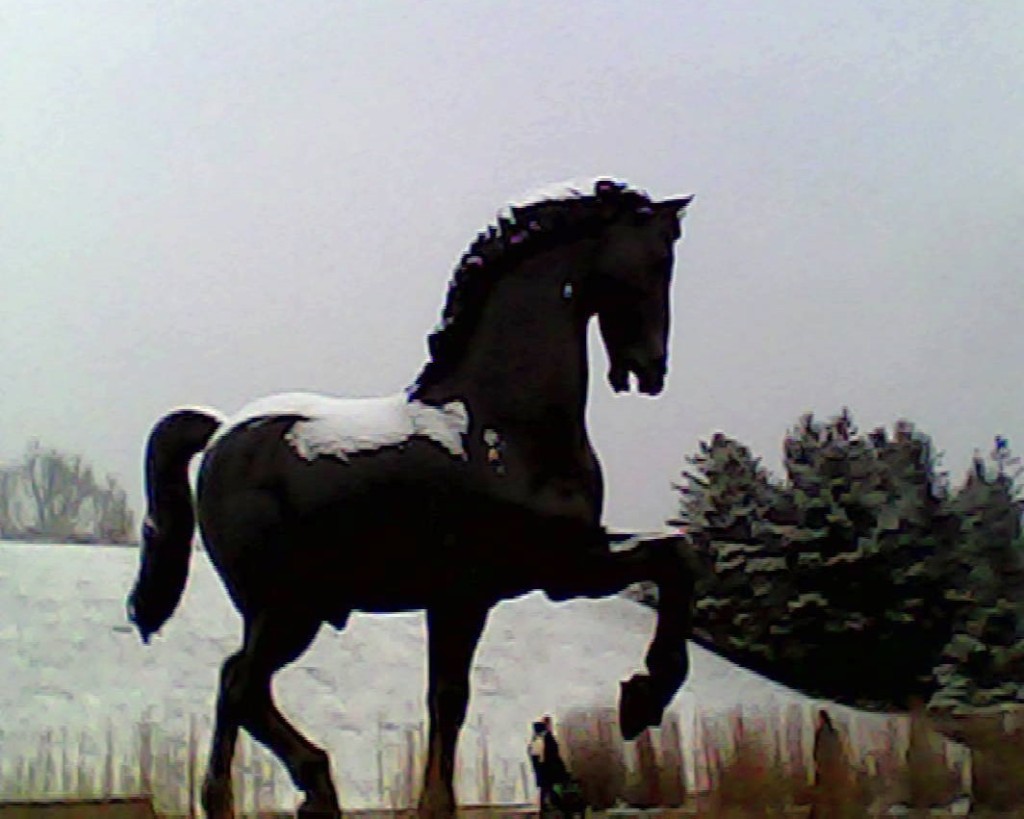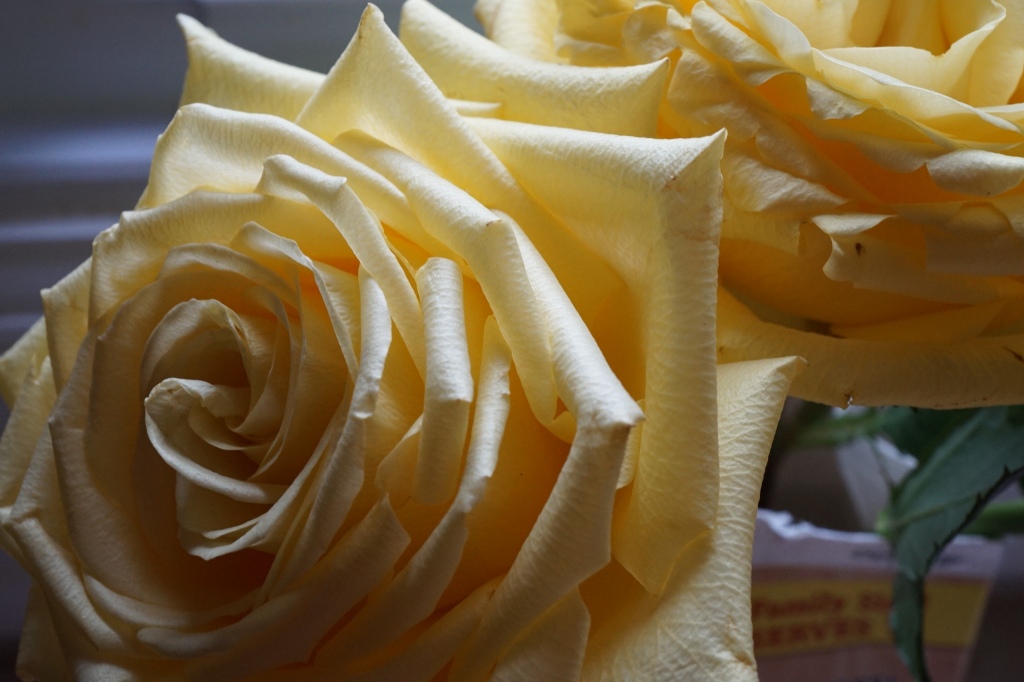
That “beauty is in the eye of the beholder” is widely accepted and experienced, too. So when it comes to a photo of something of beauty, the finished picture can do justice to the original subject’s own wondrous form or instead the picture can fail to communicate the feelings one might have in the direct experience of being there. If photography is a pane of glass and its frame to see a person, place, or thing, then is it perfectly transparent or does it add some enhancement; does it remove or obscure something; or both – much like a translation from one language to another inevitably involves surplus meaning layered into connotations and also the reverse, deficit meaning that fails to come across in the new language. In other words, in the relationship between lens and subject, photographer and field location, how much of the resulting picture’s effectiveness comes from the photographer’s treatment and interpretation and how much is inherent in the subject, regardless of who points their equipment at the thing? Put another way, when there is an artistic masterpiece to photograph, will all pictures be equally artful? Can a masterful photographer make a meaningful picture with inferior gear or by approaching any subject, no matter how ordinary, with an artful eye?
This photo comes from a toy camera with very limited ability to record wide-ranging light values (fixed aperture) and locked focus, rudimentary framing window, and tiny photo sensor. The giant bronze statue is a work of art to be seen from all angles and in all seasons, inviting the visitors to the sculpture park to engage with its many facets by walking under and around, viewing from near and from a distance. The viewing experience in person is altogether different to seeing any number of portraits of it from various angles, cameras, and lighting conditions. One experience is in real time as clouds come and go, the wind sighs, and the hub-bub of others drifts on the air. The other experience is silent and two-dimensional as a frozen moment. Recording the subject as video — either from a fixed spot on a tripod as time passes, or by walking around the sculpture to convey its many sides — is something like the in-person experience since the sense of time passing and the audio channel is included. But the question remains about the visual experience: how much of the impression on one’s mind is inherent in the subject and how much comes from the way a photographer communicates this subject’s beauty; a reporter of the event rather than the raw, unprocessed, non-articulated event itself. Put another way, is a well-done photo of a beloved painting purely a facsimile to the real thing; a derivative echo of the source? Or can the photo, somehow, be equal to or better than being there in front of the actual artistic subject?

An old distinction from Biblical studies is between the Greek love for analytical divisions, such as Form and Content, on the one hand, and the ancient Jewish refusal to abstract the form and its content. In other words, this view says that form only exists when there is content; content only exist when there is form. Separating one from the other may be intellectually stimulating and the basis for hypothesis-testing, but in a relational sense, you only can know the thing by embracing it all together, not in layers of distilled abstraction. So perhaps this discussion of the photographer’s value added to subjects that are complete artworks on their own runs along similar lines: rather than to tease apart the visual experience of a photo to record an artwork (or a subject of naturally occurring beauty, like an ungilded lily or a sunset free from postprocessing enhancement), perhaps the viewing experience has to be taken at face value, as an object of visual engagement all of its own, no matter what appears in the viewfinder. This echoes the quote attributed to Garry Winogrand about his motivation for taking so many exposures in his street photography, ‘I photograph things to see what the picture will look like as a photo’ [paraphrase]. In other words, regardless of the original subject and any technique the photographer may apply, it is the printout in the end that matters: a two-dimensional representation to be mounted for display or to fly around the small screens of social media around the world. By this reasoning, the subject –a sculpture or painting, or performance arts; a random beam of sun on a street scene, or the shadows falling on one’s kitchen table– is the raw ingredient for the photographer to handle by choice of standpoint (subject, juxtaposition, context, frame of inclusion or exclusion), exposure, moment of shutter release, and so on.
Jumping to another metaphor, in the world of music there is separate credit given to composer, performer, and any particular (recording made of) performance. The same composition will sound differently depending on what orchestra performs it. And that orchestra will give a different effect when led by one conductor’s interpretation versus another’s. Even the same conductor and orchestra will have slight variation when performing on one occasion versus another; one venue versus another. From the point of view of audience, the music is the music. Unless they have multiple listening experiences to compare, this one engagement with the performing art will be the only source of stimulation to elate or dampen their spirits. The analytical distinction of composer, orchestra and conductor, performing venue and overall spiritedness for a particular iteration of the composition will be beside the point. To the audience, the experience will be a whole; a complete meal; a totalizing sensory experience.
The question about source subject (the composition and the circumstances of history and personality going into the composer’s work) versus interpretive nuance affecting the end result would be useless and unproductive to ask. Thus for a photograph as object of its own two-dimensional value, the criticism persists: that taking a picture of an artwork or a natural wonder is a futile exercise that should not “gild the lily” and that may well not do justice to the original subject. If photos of beautiful subjects (ad absurdum: for photos of great pictures made by self or others, historically or today) can only aspire to show the subject to simulate the direct experience of being there, then no credit is given to the judgement of the photographer to select best lighting, framing, focal length, and so on.
By way of summing up, let us return to the title of this article, beauty that is raw and beauty that is cooked; beauty that is found in the wild and beauty that is boxed and clearly labeled “this is a work of art.” Whether the photographer notices something beautiful about light, texture, color pattern, geometry, or moment of juxtaposition —all or any of these can motivate the person to record the scene for others to see or for one’s own recognition of significance in the occasion. The moment could arise by serendipity out in the wild of hustle and bustle or surrounding by natural quietude. Or the moment could arise by purposefully attending a gallery of 2-D and 3-D creations acknowledged to be expressing beauty. In both cases, planned or unplanned, it is the photographer’s visual experience of the subject that leads to a translation from the moment into pictures frozen in time for others to see at that time or lifetimes later on. By sticking to the end product, a flat representation made by optics and electrons or chemicals, the subject can be regarded as nothing more than the raw material about which the photographer spots an opportunity, develops the idea into a composition by considering various approaches, and finally releases the end result. In this way, it is not too important to worry that a picture of a piece of art is categorically of no lasting value because the subject itself is inherently beautiful. A bad photographer certainly can spoil the viewing experience by making an unflattering interpretation. A good photograph, though, successfully conveys something of the direct experience of encountering the art subject (or a natural wonder out in the world).
In conclusion, even though it is complicated (maybe futile or misguided) to disentangle the artful contribution of photographer to a subject of inherent beauty or wonder, surely that eye and hand of the photographer are present in the resulting print. Just as the ineffable lens art mostly involves invisibility of light and air and standpoint, so also does the role of the photographer involve ephemeral inputs like decisions about exposure, timing to release the shutter, choice of viewpoint and foreground and context framed. The medium is about transparency but also the art of the photographer is mostly invisible. The subject for composition can be made by artists in galleries or it can be made by geology and conditions of weather and nature’s rhythms. Either way, it is the photographer who puts the subject matter into a frame for all to appreciate.


